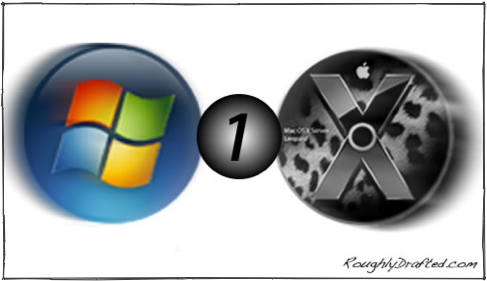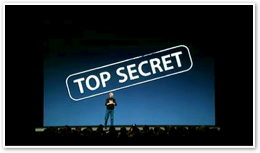
Leopard vs Vista 1: Prerelease Marketing
It's tricky to directly compare Apple's Mac OS X Leopard and Microsoft's Vista, because the two products will be sold to very different markets in different ways. Here's a look at how both differ in their prerelease marketing.
The biggest hurdle in directly comparing Mac OS X Leopard against Windows Vista is that Apple and Microsoft have very different marketing strategies, particularly when it comes to prerelease software. Why is Apple so Secretive? described this in greater detail.
The Difference in the Known Knowns
Nearly all the public information available on Apple's next version of Mac OS X comes from a brief slideshow presented at WWDC in October and repeated on Apple's Leopard sneak peek website, while Vista has been in public beta for years, and its features are widely documented and have been extensively reviewed.
The public actually knows more about the features that have been cut from Vista than they do about the features that will actually ship in Leopard this spring.
In part, that's because Microsoft repeatedly advertised its changing plans over the last six years, while Apple shipped regular new advances to Mac OS X that each unveiled a surprise of unanticipated new features.
Apple and Microsoft act out these roles because each suits the position and needs of the company. Microsoft, as the reigning incumbent, is best served by making broad announcements of future intentions that pacify its user base into feeling comfortable with staying where they are.
Apple, as a minority challenger, is best served by playing its cards close to the chest, and then dramatically unveiling them with the greatest fanfare possible right when a product is available for sale.
The Reversal of Fortune
Interestingly, the tables are nearly reversed between the two companies in the music player market. This fall, Apple announced full details of the next generation of its Shuffle and Nano, along with advanced plans for next spring's iTV, while details on Microsoft's Zune have been hard to find and shrouded in myth and hype.
Even Microsoft's official PR webpage for Zune was short on meaty details and long on generalizations and marketing fluff. Microsoft executives provided few details in interviews, and left published errors uncorrected.
CNET's MP3.com prominently reported Microsoft as saying that the Zune pointedly would not play video at its release.



When I cited the CNET article in 10 iPod vs Zune Myths in the context of Microsoft's leading Zune executive describing in his own words that portable video "wasn't a big focus for the company," I was cowardly attacked for supposedly inventing the idea by a Microsoft aligned Zune site.
Vaseline Hardball
If Microsoft hopes to slide its excessively restrictive DRM and other obvious product flaws under the radar using the distraction of hype and incomplete information, it can't cry when the snakes of misinformation it unleashes come back to bite it.
How hard would it have been to put together a straight forward web page of plainly stated features? As it stands, the company is either tragically incompetent or was simply floating the idea of unfinished video playback in order to gauge how much work they'd have to actually do before launch.
While Apple works to keep details of its products secret prior to their release, Microsoft's marketing campaigns seeds the market with information that is long on hype and short on specifics, whether it’s flamboyantly positive fluff about its own future plans, or fearsomely negative doubts and uncertainty about rivals. 

This difference in prerelease marketing tactics also plays into an honest comparison between Vista and Leopard.
As Rumsfeld might have described, there are known knowns, known unknowns, and unknown unknowns with Apple, but with Microsoft, there are also unknown knowns, things we thought we knew that turned out later to not be the case. A simpler word would be "misinformation," with Vaporware and FUD as specific examples.
This gives Apple an advantage with Leopard over Vista, as well as with the iPod over the Zune: most people would rather be pleasantly surprised than disappointed.
This Series










Wednesday, November 15, 2006



 Bookmark on Del.icio.us
Bookmark on Del.icio.us Discuss on Reddit
Discuss on Reddit Critically review on NewsTrust
Critically review on NewsTrust Forward to Friends
Forward to Friends
 Get RSS Feed
Get RSS Feed Download RSS Widget
Download RSS Widget





